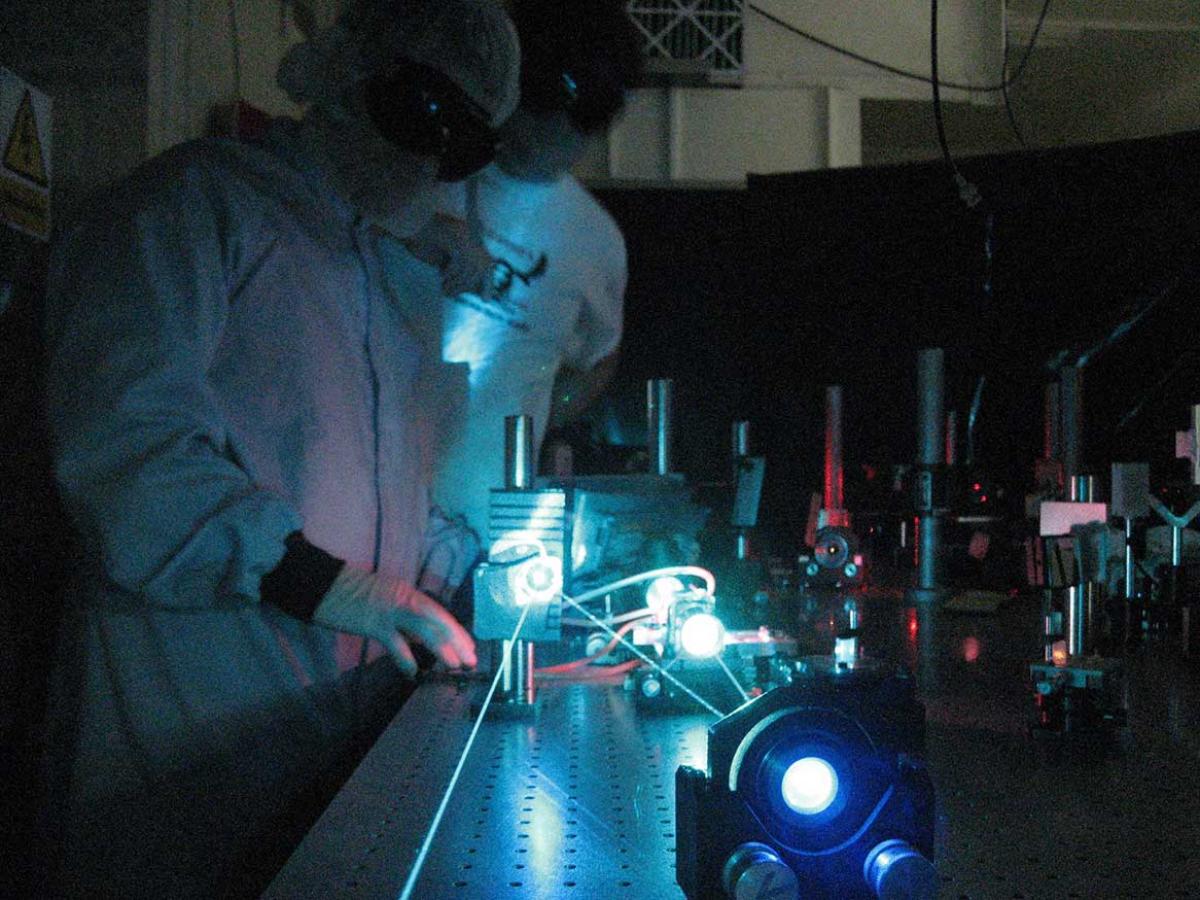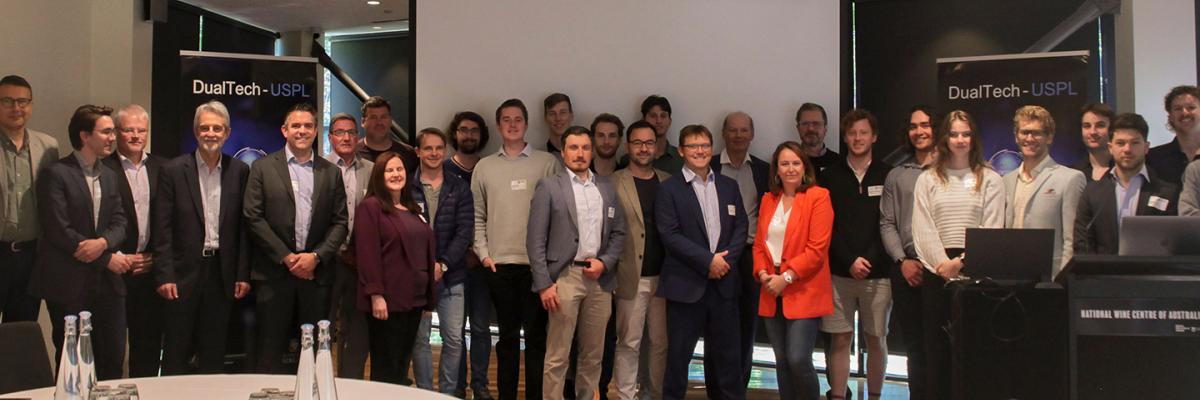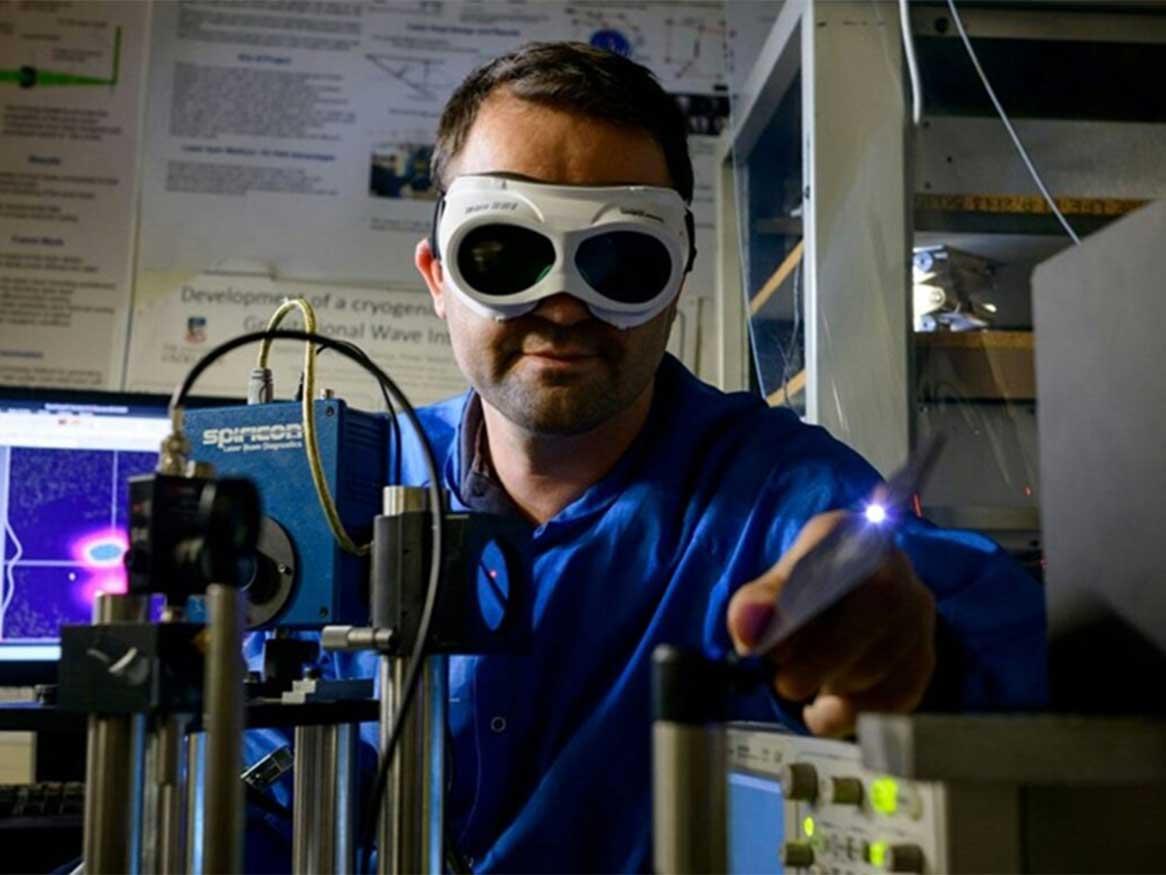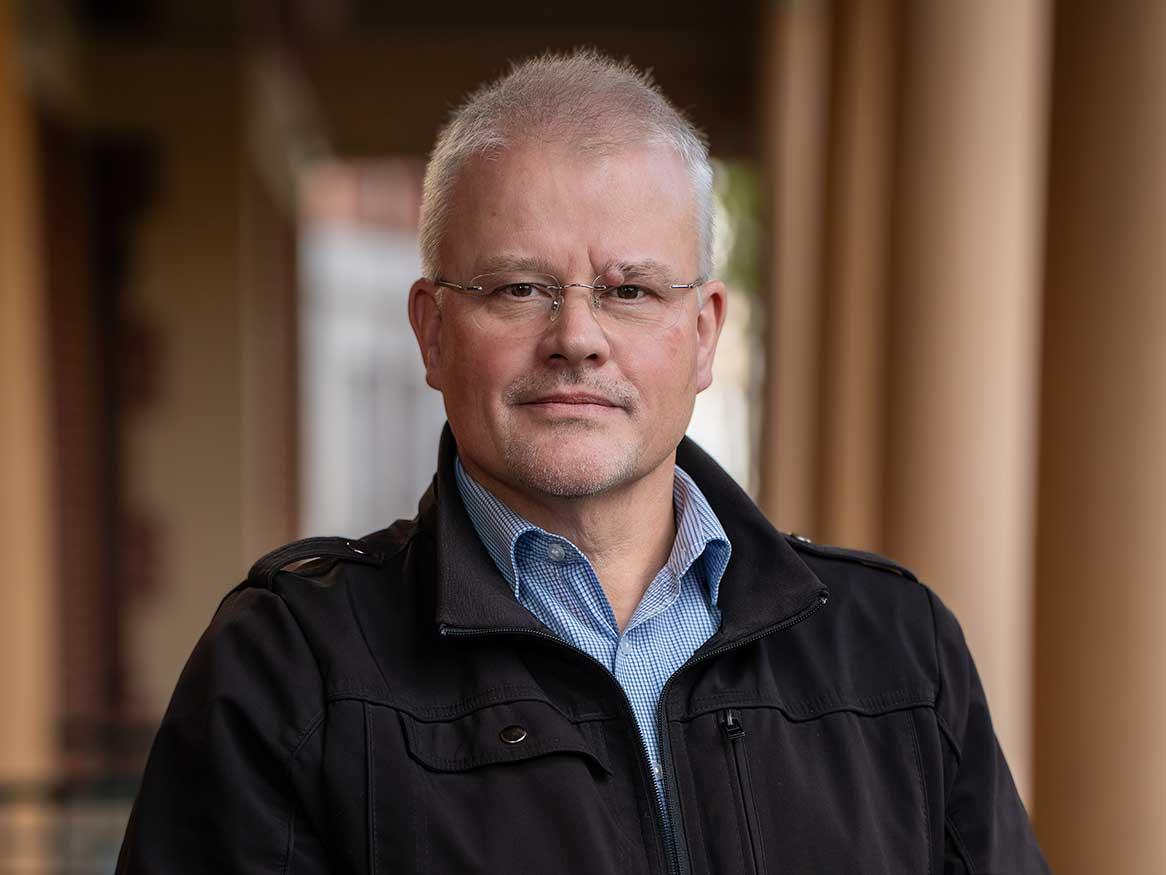DualTech-USPL Group
Our DualTech Ultrashort and Short Pulsed Lasers (USPL) research group focuses on designing and developing USPL laser sources for dual-use applications. We bring decades of experience in building high average and high energy lasers with high repetition rates.

Our mission is to create a sovereign USPL scientific and industrial capability. This research program is timely, practical and addresses critical national needs. This ambitious leading-edge scientific program will create high value jobs to enrich the Australian defence industry and benefit Australian consumers in the long term.
-
Research impact
Our DualTech USPL research group seeks to provide innovation in source design, development and construction of USPL laser systems, bringing together a diverse range of skills including mechanical and electronic engineering, optics and photonics.
DualTech-USPL Technology Five Point Plan
- Strategic research towards dual-use applications.
- Deliver ultra-short and short pulse laser technologies for defence applications.
- Support application of dual-use laser technology within science, health and industry sectors.
- Collaborate with leading research centres, defence agencies and industries.
- Educate the next generation of scientists, engineers, and technologists to create a local high value-add workforce
-
Research students
Our aim is to develop the future skilled workforce to provide sovereign manufacturing capability of USPLs in Australia. We develop students’ cross-disciplinary research skills by presenting them with a variety of experimental activities in an open forum, hands-on environment. We deliver opportunities for students from diverse backgrounds to get involved in a vast array of exciting practical challenges – from mechanical design of experimental components to electronic control, through to the complicated optics problems that are crucial to building a laser system.
-
Research opportunities
Our DualTech-USPL research group focuses on academic, defence, scientific and commercial opportunities including:
Defence
Defence applications include directed-energy and countermeasures against current and next-generation threats. A key advantage of DualTech-USPL is long range detection with high precision engagement over long distances.
Ultra-fast chemistry
The ultrafast interaction between highly energetic pulses and materials can reveal details of complex structures. The mid-IR band is of particular interest for activation of many organic molecules.
Material processing/manufacturing
The extremely high peak power of ultrashort pulses can ionise materials and create highly conducting plasmas. Consequently, USPLs are quickly becoming the backbone of advanced materials. USPL processing of polymers, glasses and ceramics produces clean cuts and contamination-free surfaces which yield significant quality and cost advantages when compared to current processing methods.
Higher harmonic generation and soft x-rays
High energy, ultra-short duration mid-IR pulses can produce attosecond-duration, extreme-ultraviolet (XUV) and soft X-ray pulses via a process known as high-harmonic generation (HHG). The IR lasers at 2-micron wavelength – engineered by DualTech-USPL – place or group in a prime position to generate shorter wavelength X-rays with an efficient yield. The mid-IR wavelength band offers “Goldilocks’ performance” – not too short to make the UV and not too long to reduce yield. USPL sources can be used to create “table-top” X-rays, proton and electron generators for a range of medical, scientific and industrial applications.
Remote sensing
USPL mid-IR pulsed lasers are of intense technical and scientific interest as many molecules absorb light in this region due to molecular vibrational absorptions. Consequently, very distinct “molecular fingerprints” exist that can be exploited for sensing of trace gases in the atmosphere. In biomedical applications, ultra-short pulse regimes permit the clean excision of biological tissue without altering tissue chemistry, and without generating chemical by-products that interfere with normal healing e.g. trigger excessive inflammatory responses.
Biomedical
This is a great area of exploration. Ophthalmology is a significant adopter of medical laser technology as USPL technology holds the promise of being more precise, faster and less invasive – causing less collateral tissue damage to the eye. Such applications require high-energy pulsed broadband and tuneable narrowband mid-IR sources. USPL-based systems can be used for a broad range of applications in this sector including refractive, cataract, glaucoma, retinal and oculoplastic surgery.
Quantum technology and space
Wavelength, linewidth, power, polarisation, temporal, and spatial beam profiles are all important control parameters for use of USPL sources in quantum technologies. Within Space Simulation, the generation of radiation allows the simulation of the space environment. A space simulator would allow the testing of materials and devices prior to launch into space. USPLs could compliment South Australia’s investments in the space industry.
Clean fusion energy
In December 2022 ultra-short-pulse lasers were responsible for possibly the biggest scientific development of the century – Lawrence Livermore National Laboratory achieving fusion “net-energy-gain.” It was described as a ‘historic, first-of-its kind achievement’ by the US Department of Energy due to its potential as a new clean energy source. This has triggered the planning of global missions to build the world’s first fusion power plant in the pursuit of zero carbon energy.
Hydrogen production
Hydrogen production has been identified as a potential early use of fusion energy. Recent designs of fusion power plants produce an abundance of both electricity and heat. Combined this could produce a most efficient means of producing hydrogen as the efficiency of electricity driven electrolysis can be increased with the use of heat.
Nuclear waste transmutation
USPL lasers are being investigated as a potential method of radioactive waste transmutation from long-lived to short-lived radioactive waste products. This reduces the requirement for storage of long-lived nuclear waste, which can require containment for up to hundreds of thousands of years.
-
Collaborations
Collaboration is at the heart of our research endeavours. We have engaged with stakeholders from diverse sectors—defence, research institutions locally and internationally, industry leaders, and communities—to ensure a holistic and inclusive approach. Through shared insights, collective efforts, and an unwavering commitment to excellence, we can chart a course that transforms challenges into opportunities for South Australia.
Example research with Defence Trailblazer
Our DualTech-USPL research group fosters close collaboration with USPL Discipline at the Defence Science Technology Group (DSTG). It also leads research work in hypersonic and countermeasures within Defence Trailblazer. The Defence Trailblazer for Concept to Sovereign Capability is a $250 million enterprise powered by the University of Adelaide and the University of New South Wales (UNSW), with funding from the Australian Government.
-
Facilities
The centrepiece of the USPL research project is the construction of a large-scale, world leading Laser Manufacturing Facility based in Adelaide, enabled by laser technology developed at the University of Adelaide in joint effort with industry and Defence Trailblazer.
DualTech–USPL: Research Facility (Under Construction)
Fostering collaborative research and large-scale laser development, this facility will serve as a central hub for advanced laser source construction, system integration, and full-scale experimentation. It will support projects across laser fusion, defence, industrial, and scientific applications.DualTech–USPL: Fundamental Science
Focused on generating new knowledge and intellectual property for dual-use applications, this laboratory investigates laser–matter interactions, beam propagation, and fundamental optical science that underpin the next generation of high-power and ultrashort pulsed laser technologies.DualTech–USPL: Rapid Prototyping
A hands-on engineering space dedicated to component fabrication, optical assembly, and rapid testing of laser concepts. This laboratory bridges research and application, enabling students and researchers to design, prototype, and validate innovative laser technologies efficiently. -
Industry events
Symposium
The group’s recent symposium brought together leading experts in ultra-high-powered lasers to drive industry innovation.

-
Our researchers
Research team Expertise Professor Miftar Ganija Professor Peter Veitch Dr Said Al-Sarawi Emeritus Professor Jesper Munch
Engage with us
For any scientific collaborative research engagement, PhD, Master and Honours project please contact the Group Leader, Professor Miftar Ganija, and for any industry and business engagement please contact Greg Bell.


